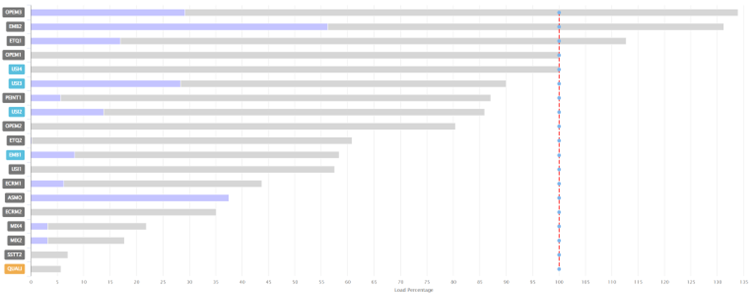The world is complex, and technology is more accessible than ever. Is that why so many of us are drawn to finding complex solutions for issues that might actually be simple?
According to Eli Goldratt, the father of the Theory of Constraints, all organizations must be intrinsically simple. It is our way of assessing situations that renders them complex.
In this new series of articles, we will evaluate different approaches to making apparently complex situations simple, in the fields of production planning, distribution, and procurement.
Let’s start with capacity management and load balancing in a complex production environment.
Let’s imagine you manufacture to stock and to order. You have many workstations — machining, fitting, welding, subcontracting, inspection, and so on. You have dozens of operations in your routings. Thanks to your orders and the product mix to be manufactured, there is permanent instability, and you are subject to floating bottlenecks.
Of course, you have orders that come in randomly every day, so you must also make quick decisions in order to promise on-time deliveries and keep them. Remember supply chain Tetris?
The routings of your current production orders look like this example:

It’s inherently complex, right?
Well, maybe not…
Let’s see how to balance the load and capacity of this system and make the right decisions as we go along. To do this, we will use the Intuiflow system load graph below:

This graph compares the load and capacity of manufacturing resources over a given period (in this case, the next two weeks). The vertical line shows 100% of our demonstrated, realistic capacity.
As a production planner, I know I need to take a closer look at the first three items, where I will be overloaded compared to the defined capacity.
So, I can easily decide what to do on these resources:
- Adjust the staffing to make it happen
- Put in some extra hours
- Do nothing because the delay is absorbed by my downstream buffers (time / stock)
- Postpone certain production orders
- Temporarily set one of these resources as a constraint, because structurally we will be saturated for a while
From a complex situation, I see the risks, and within a few minutes I can decide on actions, because I have a simple view.
To achieve this simplicity, we conducted an upstream modeling project that enabled us to hide the complexity:
- We defined the default constrained resources, which pace our flows — these are the blue resources on the graph
- These resources were finite capacity scheduled by an algorithm that considers actual demand and inventory priorities, routing sequences of operations, and changeover optimization preferences
- Time buffers have been placed in our routings at key points
- The availability of complete kits of components to schedule these productions has been ensured, with adequate control of the decoupling points
We have therefore defined the Demand Driven Operating Model (DDOM).
Once this model has been defined, it is used in an aggregated manner:
- We zoom out to look at the system, including all resources, on the graph above
- The load and capacity elements are cumulated over a period, in this case two weeks, to take into account / average the flow speed over this period
- A Pareto approach is taken to identify the few items that require action
In summary, simplicity is the key to making the right decisions at the right time, but to achieve this simplicity you need to take the time to design your model properly and adopt a systemic vision.
In a future post we will deconstruct the complexities involved in distribution — which are often compounded by conventional DRP approaches.
To learn more about the concept of simplicity, read this 2016 article by Eli Schragenheim.












